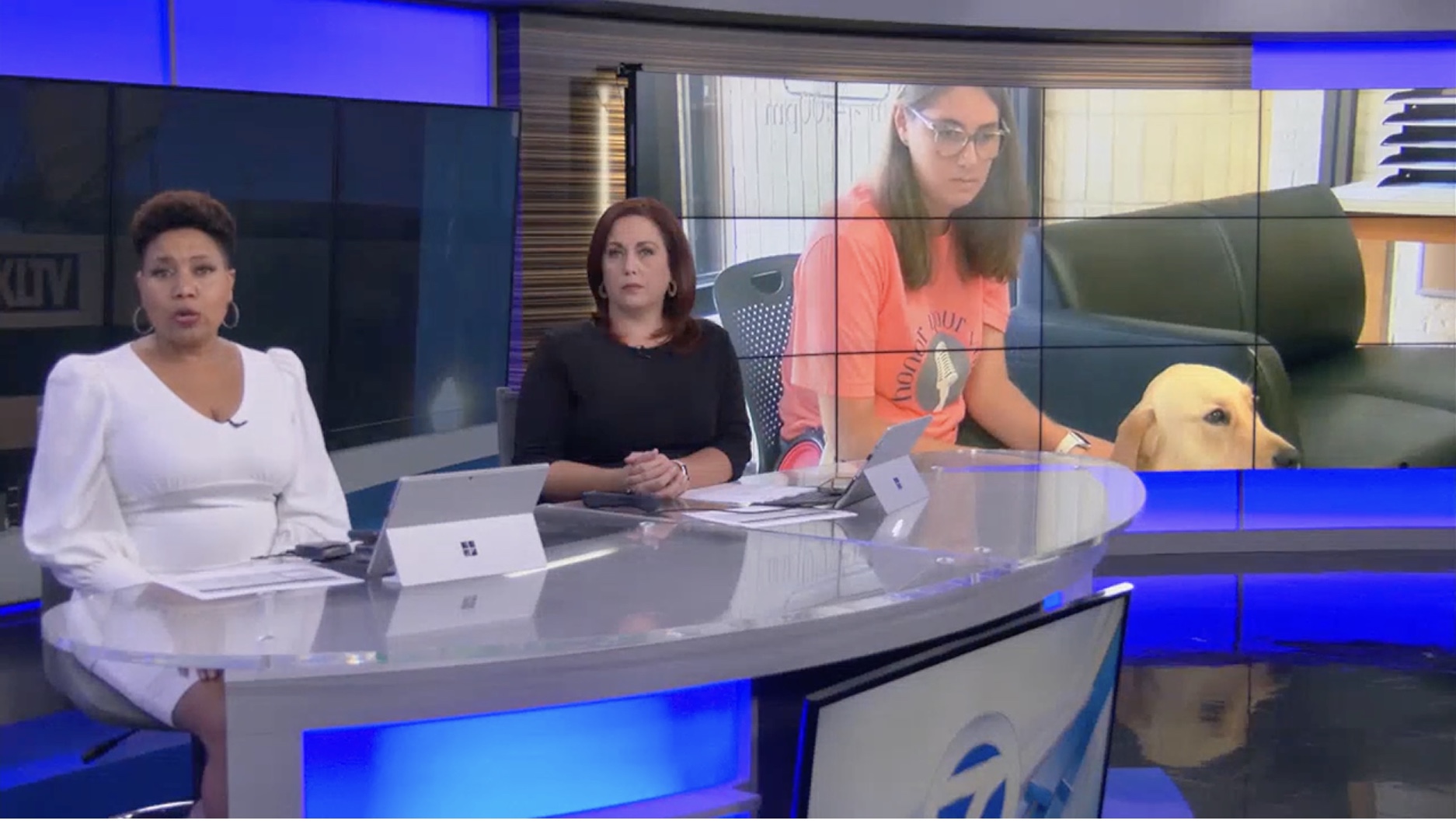
21 Sep Special service dog changes UT Tyler student’s life for the better
September is known as National Service Animal Month. This month is used to highlight and bring awareness to the extraordinary work service animals do.
Emily Anderson is originally from the DFW area and recently chose to move to Tyler to start her freshman year at UT Tyler because of her connection to East Texas Lighthouse for the Blind. Along with moving away from her family and starting college, she also experienced another big change in the form of a service dog named John.
“It’s been kind of crazy, especially in the beginning. You’ve got to get used to having another … not person, but another being with you all the time, which is kind of crazy,” Anderson said.
Anderson submitted her application with a non-profit called Southeastern Guide Dogs in Florida. The wait list for a service animal can take anywhere from six months to a year, and Anderson started the journey in February.
After the completion of the application comes testing with eye doctors and three letters of recommendation from teachers or peers. Someone with the organization then comes out and completes the testing required to see what your day-to-day life is like. From there you have to wait till you are matched with a dog. Anderson found out she was matched with John in June.
“That was really, really amazingly quick so I was kind of a little in shock and super excited,” Anderson said.
From there Anderson went to Florida for three weeks to train and eventually meet her dog.
“I was a little nervous about learning all of the commands I didn’t think I would be able to keep them all straight but somehow, I did. They did really well at training us so I can remember all of the commands and retain all the information,” Anderson said.
Chancelor Agorastos goes to TJC and recently got matched with his own dog from the same organization and will go to Florida for training in October. He said this will be really beneficial for him.
“Having a dog is going to be better than having a cane because there is a lot of things that can be in the environment that a cane isn’t as good at finding or just can’t find at all,” Agorastos said.
Anderson said she has noticed her life has changed having John with her.
“I feel a lot more comfortable. I feel like I can actually go places alone and I’m okay. When I’m with a group though it still helps because he can follow a member of the group,” Anderson said.
Julie Henry with East Texas Lighthouse for the Blind said people should not touch, talk or look at a dog while it’s working.
“People will make eye contact with the dog which is just as distracting as petting a dog. So pretending the dog is not there is perfect,” Henry said.
Southeastern Guide Dogs is funded strictly by sponsors and doners. $75,000 is spent on the dog before formal training begins. After that the number totals around $100,000.






Sorry, the comment form is closed at this time.